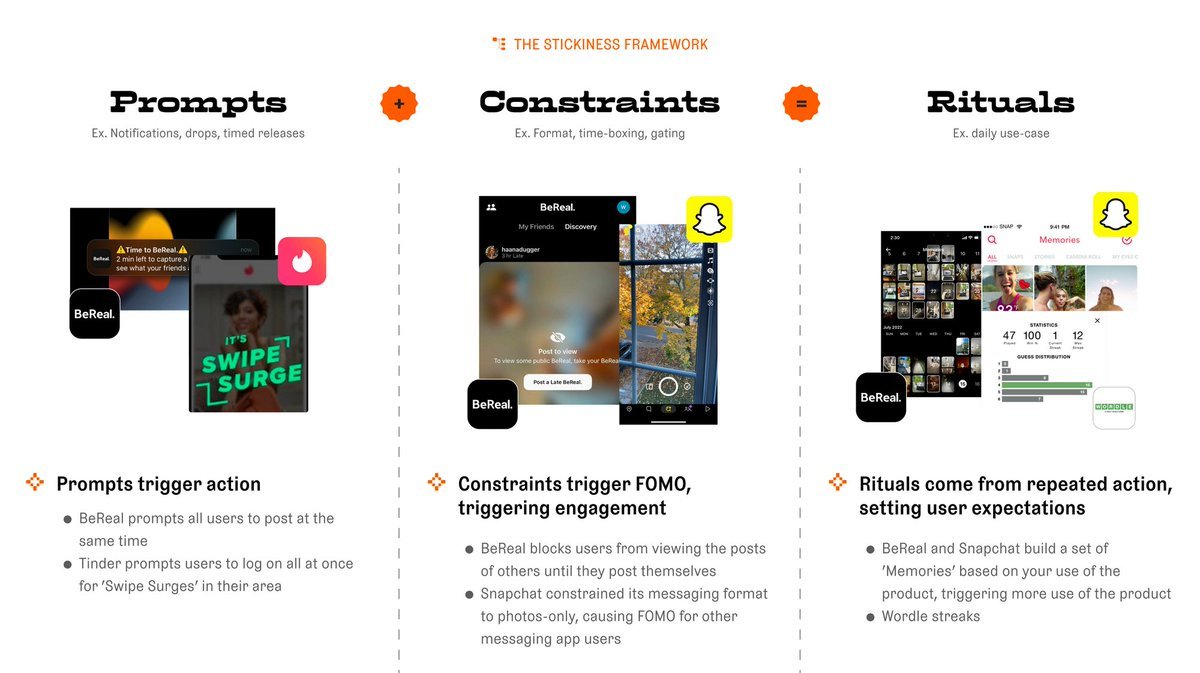
I used to believe that a great app idea was enough to make it successful. But after countless failed products, now I know better
The stickiness framework has been my lifeline:
1️⃣ Trigger action with prompts
2️⃣ Ignite FOMO with constraints
3️⃣ Keep 'em coming... See more

